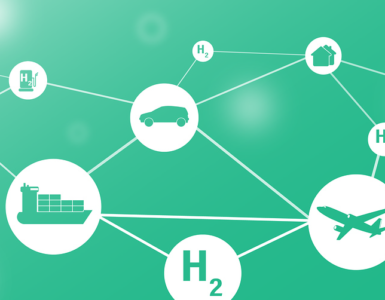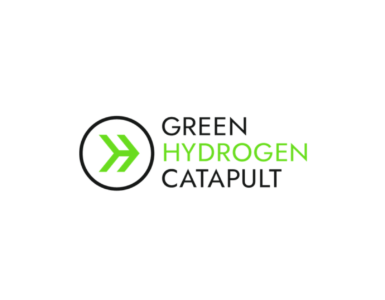Government of Canada releases proposed legislation for clean hydrogen ITC and clean manufacturing ITC.
The Federal Government delivered an early Christmas gift for clean hydrogen and clean manufacturing related businesses (and tax practitioners) by releasing proposed legislation for the implementation of the clean hydrogen investment tax credit (the Clean Hydrogen ITC) and the clean manufacturing investment tax credit (Clean Manufacturing ITC).
The legislation released for both the Clean Hydrogen ITC and the Clean Manufacturing ITC largely implements what was announced in Budget 2023, as previously discussed by the authors in their blog, Canada Using the Carrot Instead of the Stick to Decarbonize in Budget 2023 (March 2023 Blog).
Clean Hydrogen ITC
The mechanics of the Clean Hydrogen ITC is similar to that proposed for the other clean economy tax credits (the Clean Economy ITCs), which as defined under subsection 127.47(1) includes the CCUS tax credit, the clean technology investment tax credit, the Clean Hydrogen ITC, and the Clean Manufacturing ITC. The Clean Hydrogen ITC will apply to equipment used to produce hydrogen through electrolysis or through natural gas reformation abated by carbon capture.
🔥 What about we co-host a webinar? Let's educate, captivate, and convert the hydrogen economy!
Hydrogen Central is the global go-to online magazine for the hydrogen economy, we can help you host impactful webinars that become a global reference on your topic and are an evergreen source of leads. Click here to request more details
The amount of Clean Hydrogen ITC available to a taxpayer will depend on the expected carbon intensity of the project, which varies from:
- 40 percent of the capital cost of eligible equipment for projects with an expected carbon intensity less than 0.75 kg CO2/ kg hydrogen produced;
- 25 percent for expected carbon intensity between 0.75 and 2 kg CO2/ kg hydrogen produced; and
- 15 percent for expected carbon intensity between 2 and 4 kg CO2/ kg hydrogen produced.
These rates will be reduced by 50 percent for property acquired in 2034, and eliminated for property acquired after 2034.
Claiming the Clean Hydrogen ITC
Taxpayers seeking to claim the Clean Hydrogen ITC will be required to submit a clean hydrogen project plan to the Minister of Natural Resources, that includes a front-end engineering design study that sets out the expected carbon intensity of the project, which is supported by a report prepared by a qualified validation firm.
A qualified validation firm is defined as an engineering firm that is registered and in good standing with a professional association with authority provided by law in the relevant jurisdiction in which the project is located. The firm must further have appropriate insurance coverage, expertise in modelling using the Fuel LCA model and in production processes for hydrogen, deal at arm’s length with the taxpayer, and meet the requirements described in the government of Canada’s carbon intensity modelling guidance for hydrogen production.
The carbon intensity of a clean hydrogen project will be calculated using the Fuel LCA Model of the government of Canada, and will include upstream emissions from inputs to the clean hydrogen production processes (i.e., electricity from the provincial grid).
As provided in the 2023 Fall Economic Statement, these carbon intensity calculations will take into account any eligible power purchase agreements entered into by the taxpayer, as well as any eligible renewable natural gas used for producing hydrogen through natural gas reforming. The legislation further provides that any carbon intensity modelling guidance published by the Government of Canada will apply conclusively with respect to the calculation of carbon intensity.
The Clean Hydrogen ITC will only be available to be claimed by taxable Canadian corporations (although they may claim the Clean Hydrogen ITC through a partnership). As with the other Clean Economy ITCs (excluding the Clean Manufacturing ITC), Clean Hydrogen projects will also be subject to labour conditions, which are discussed in more detail in a recent paper written by the authors.
The capital cost of eligible clean hydrogen property will be reduced by any government assistance or non-government assistance received by the taxpayer (as defined under subsection 127(9), and will not include any amount for property on which another Clean Economy ITC has been claimed.
Also excluded is any preliminary clean hydrogen work activity (defined as including obtaining permits or regulatory approvals, performing front end design or engineering work, conducting feasibility studies or pre-feasibility studies, conducting environmental assessments, or clearing or excavating land).
Ammonia Production
The Clean Hydrogen ITC will also apply to clean ammonia equipment, providing a 15 percent refundable tax credit for such equipment. Clean ammonia equipment is defined in the legislation as equipment used solely for producing ammonia, including equipment for converting hydrogen into ammonia, heat recovery and conversion, nitrogen generation, feed storage, and refrigeration and storage of ammonia.
For dual-use hydrogen and ammonia equipment, defined as equipment that is part of a clean hydrogen project that is used for the generation of oxygen and nitrogen to be used in hydrogen and ammonia production, the capital cost of the equipment will be allocated between clean ammonia equipment and clean hydrogen equipment in proportion to the expected use of the equipment attributable to hydrogen production and ammonia production.
Dual-Use Electricity and Heat Equipment
As with the CCUS Tax Credit, dual use heat and electricity equipment that is part of a clean hydrogen project, that supports the production of hydrogen through natural gas reformation is included in the Clean Hydrogen ITC, provided that over 50 percent of the electricity or heat produced over the first 20 years of the project’s operations is expected to support a qualified CCUS project or a qualified clean hydrogen project.
Also included is transmission equipment that directly transmits electricity from the above equipment to a clean hydrogen project, provided that over 50 percent of the electricity to be transported is expected to support a qualified CCUS project or a qualified clean hydrogen project. Finally, electrical or heat energy distribution equipment is also included.
The proportion of the capital cost of dual-use heat and electricity equipment that is attributable to processes other than the production of hydrogen or ammonia will be excluded from the Clean Hydrogen ITC (although the taxpayer may claim the CCUS Tax Credit for any proportion of the dual-use equipment used in a CCUS process).
Partnerships
The Clean Hydrogen ITC claimed by members of a partnership will operate similarly to other Clean Economy ITCs, in accordance with section 127.47. The partnership calculates the available Clean Hydrogen ITC as if it were a taxpayer, and then allocates reasonable amounts of Clean Hydrogen ITC to each partner.
What constitutes a reasonable amount will be determined in accordance with subsections 127.47(2) and 127.48(12), taking into account the partner’s investment in the partnership or the work performed for the partnership, or such other factors as may be relevant. For limited partnerships, the amount of Clean Hydrogen ITC allocated to any limited partner is further limited to that partner’s at-risk amount.
Compliance
Any taxpayers that claim the Clean Hydrogen ITC will be required to file a compliance report with both the Minister of Finance and the Minister of Natural Resources, for each of the first 5 years of operation of a project, including, among other information, the actual carbon intensity of the project, and the amount of hydrogen produced by the project.
This report must additionally include a report that verifies the actual carbon intensity of hydrogen produced during the year, which has been prepared by a qualified verification firm (the definition of qualified verification firm is identical to that of the definition of qualified validation firm, with the additional caveat that the qualified verification firm cannot be the same firm as the qualified validation firm in respect of the project).
The report must be filed in prescribed form and manner within 180 days of the year end of the operating year. Failure to file a compliance report will result in the taxpayer being liable for a penalty equal to 4 percent of the Clean Hydrogen ITC claimed divided by 365 multiplied by the number of days the compliance report is outstanding.
Clawback
There will be a clawback where the average actual carbon intensity of a project is greater than the expected carbon intensity of a project, equal to the difference between the amount of Clean Hydrogen ITC claimed by the taxpayer and the amount of Clean Hydrogen ITC that would have been claimed based on the average actual carbon intensity.
There is a de minimis exception where the difference between the average actual carbon intensity and the expected carbon intensity is 0.25 kg CO2/ kg hydrogen or less. Interest will be charged on any recaptured amount from the balance due date of the taxation year in which the Clean Hydrogen ITC was claimed.
Recapture
As with the other Clean Economy ITCs, the Clean Hydrogen ITC will be subject to recapture where the property on which the Clean Hydrogen ITC was entitled to be claimed by the taxpayer is converted to a non-hydrogen or ammonia use, is exported from Canada, or is disposed of within 10 years of the acquisition of such property.
An election is available which prevents recapture where a vendor disposes of all or substantially all of its property constituting a clean hydrogen project to another taxable Canadian corporation where the purchaser and vendor elect in prescribed form.
The election essentially places the purchaser in the shoes of the vendor: the purchaser is deemed to have acquired any eligible clean hydrogen property of the vendor at the time it was acquired by the vendor, and assumes any compliance requirements or liabilities of the vendor with respect to the clean hydrogen project.
Availability
The Clean Hydrogen ITC is proposed to be available for property that is acquired and available for use after March 28, 2023.
Clean Manufacturing ITC
As expected, the Clean Manufacturing ITC generally provides a 30 percent refundable investment tax credit for property acquired by a taxpayer to manufacture clean energy equipment, and equipment used to extract certain critical minerals. As previously discussed by the authors in their March 2023 Blog, the Clean Manufacturing ITC will apply to equipment used in the manufacture of clean technology equipment, or equipment that is used in the extraction, processing, or recycling of certain critical minerals.
The Clean Manufacturing ITC has a similar mechanism of action to other Clean Economy ITCs, providing a refundable tax credit for CTM property of a taxpayer that is used for a CTM use. CTM property generally consists of manufacturing or processing equipment or structures situated and intended for use solely in Canada, that has not been used or acquired for use prior to being acquired by the taxpayer.
The key requirement in order for such equipment to be considered for the Clean Manufacturing ITC is that it is put to a CTM use. CTM use is defined as the use of property all or substantially all for qualified zero-emission technology manufacturing activities, which includes the manufacturing or processing of:
- Certain renewable energy equipment (Solar, wind, water or geothermal);
- nuclear energy equipment, nuclear fuels, fuel rods & heavy water;
- equipment for ground source or air source heat pumps;
- electrical energy storage equipment for storage of renewable energy or grid-scale storage;
- equipment used for hydrogen production from water electrolysis & hydrogen dispensing equipment;
- zero-emission vehicles (including the conversion of on-road vehicles), and related equipment used in zero-emission vehicles (batteries, fuel cells, recharging systems and hydrogen refueling systems; and
- other equipment integral and purpose built to be used in the above equipment.
Further included in CTM use is the use of eligible equipment in a qualifying mineral activity producing all or substantially all qualifying minerals. Qualifying minerals are defined as lithium, cobalt, nickel, copper, rare earth minerals, and graphite. Qualifying mineral activity generally means the extraction, processing, or recycling of these minerals.
As with other Clean Economy ITCs, the Clean Manufacturing ITC will only be available to taxable Canadian corporations (although they may claim the Clean Manufacturing ITC through a partnership). The capital cost of CTM property will be reduced by any government or non-government assistance received by the taxpayer, and will not include any amount for property on which another Clean Economy ITC has been claimed.
Partnerships
The Clean Manufacturing ITC will apply similarly to the other Clean Economy ITCs with respect to qualifying taxpayers claiming the Clean Manufacturing ITC through partnerships, in accordance with section 127.47. The partnership calculates the available Clean Manufacturing ITC as if it were a taxpayer, and then allocates reasonable amounts of Clean Manufacturing ITC to each partner.
What constitutes a reasonable amount will be determined in accordance with subsections 127.47(2) and 127.49(8), taking into account the partner’s investment in the partnership or the work performed for the partnership, or such other factors as may be relevant. For limited partnerships, the amount of Clean Manufacturing ITC allocated to any limited partner is further limited to that partner’s at-risk amount.
Recapture
Similar to the other Clean Economy ITCs, the Clean Manufacturing ITC will be subject to recapture where the property on which the Clean Manufacturing ITC was entitled to be claimed by the taxpayer is converted to a non-CTM use, is exported from Canada, or is disposed of, within 10 years of the acquisition of such property.
The amount of recapture is the lesser of the amount of the Clean Manufacturing ITC claimed on the property, and the amount determined by a formula provided in the proposed legislation.
For an arm’s length disposition, this formula is the product of the amount of Clean Manufacturing ITC claimed on the property, multiplied by the proceeds of disposition divided by the capital cost of the property on which the Clean Manufacturing ITC was deducted. In all other cases, the formula is the product of the amount of Clean Manufacturing ITC claimed on the property, multiplied by the fair market value of the property divided by the capital cost of the property.
This recapture amount is added to the tax liability of the taxpayer for the taxation year in which the disposition, conversion, or export occurred.
An election is available where a transferor disposes of a property to another taxable Canadian corporation that is related to the transferor, where the purchaser and transferor elect in prescribed form, which utilizes subsections 127(33) and (34) to defer recapture unless the purchaser subsequently disposes of the property, exports the property, or converts it to a non-CTM use.
Availability
The Clean Manufacturing ITC is proposed to be available for property that is acquired after December 31, 2023. Property is deemed to be acquired by a taxpayer after it becomes available for use under subsection 127.49(4), meaning that any property acquired will only be eligible for the Clean Manufacturing ITC once it becomes available for use.
Conclusion
As mentioned, the draft legislation for the Clean Hydrogen ITC and the Clean Manufacturing ITC largely implements the government’s previous proposals in a similar manner to that utilized for the CCUS Tax Credit and the Clean Tech ITC.
The Clean Hydrogen ITC and Clean Manufacturing ITC represent a significant opportunity for hydrogen producers and clean technology manufacturers across Canada, and the release of proposed legislation is a promising step forward for the availability of both tax credits. The hope is that these incentives will stimulate strong investment in these industries within Canada.
READ the latest news shaping the hydrogen market at Hydrogen Central
Government of Canada Releases Proposed Legislation for Clean Hydrogen ITC and Clean Manufacturing ITC, December 20, 2024








